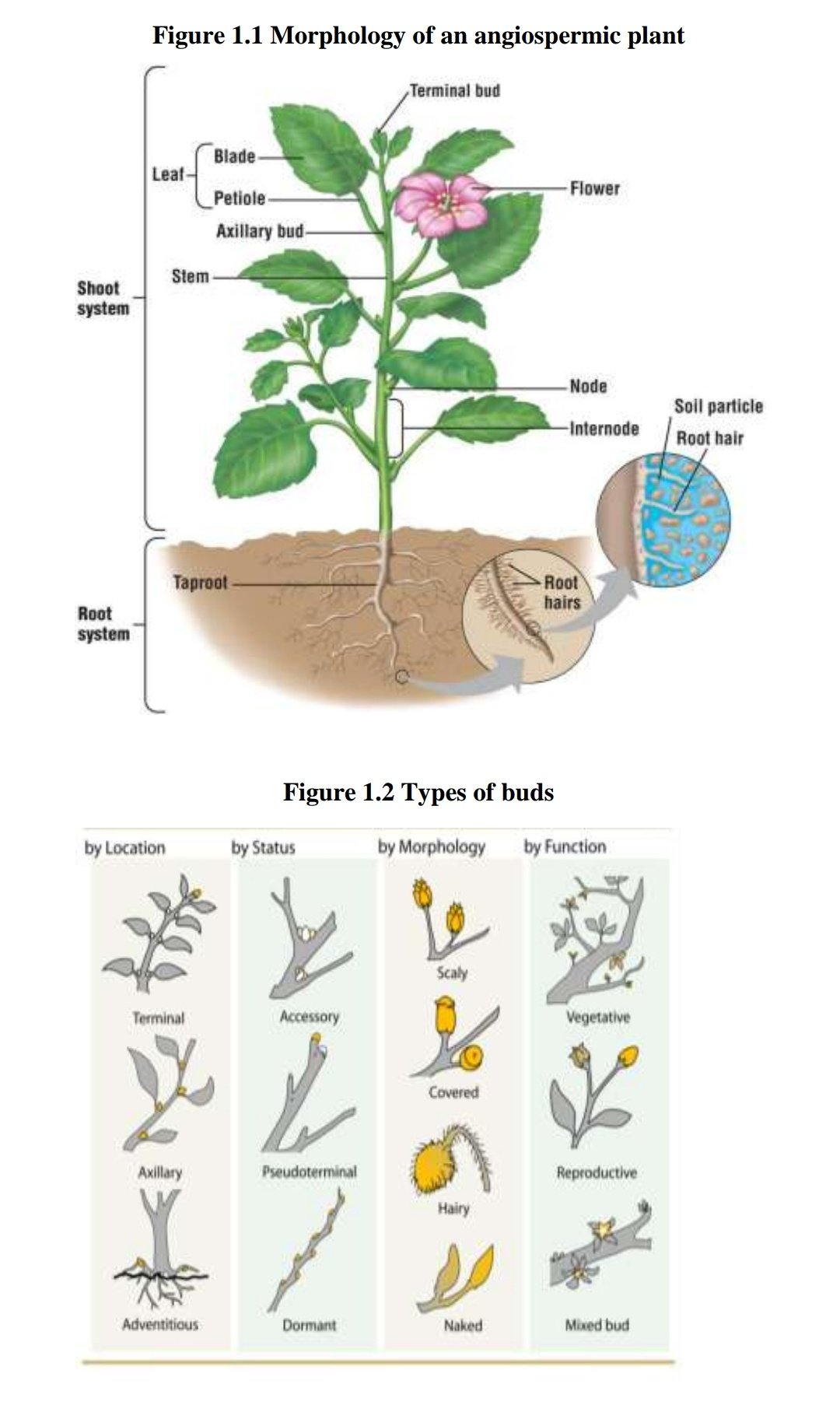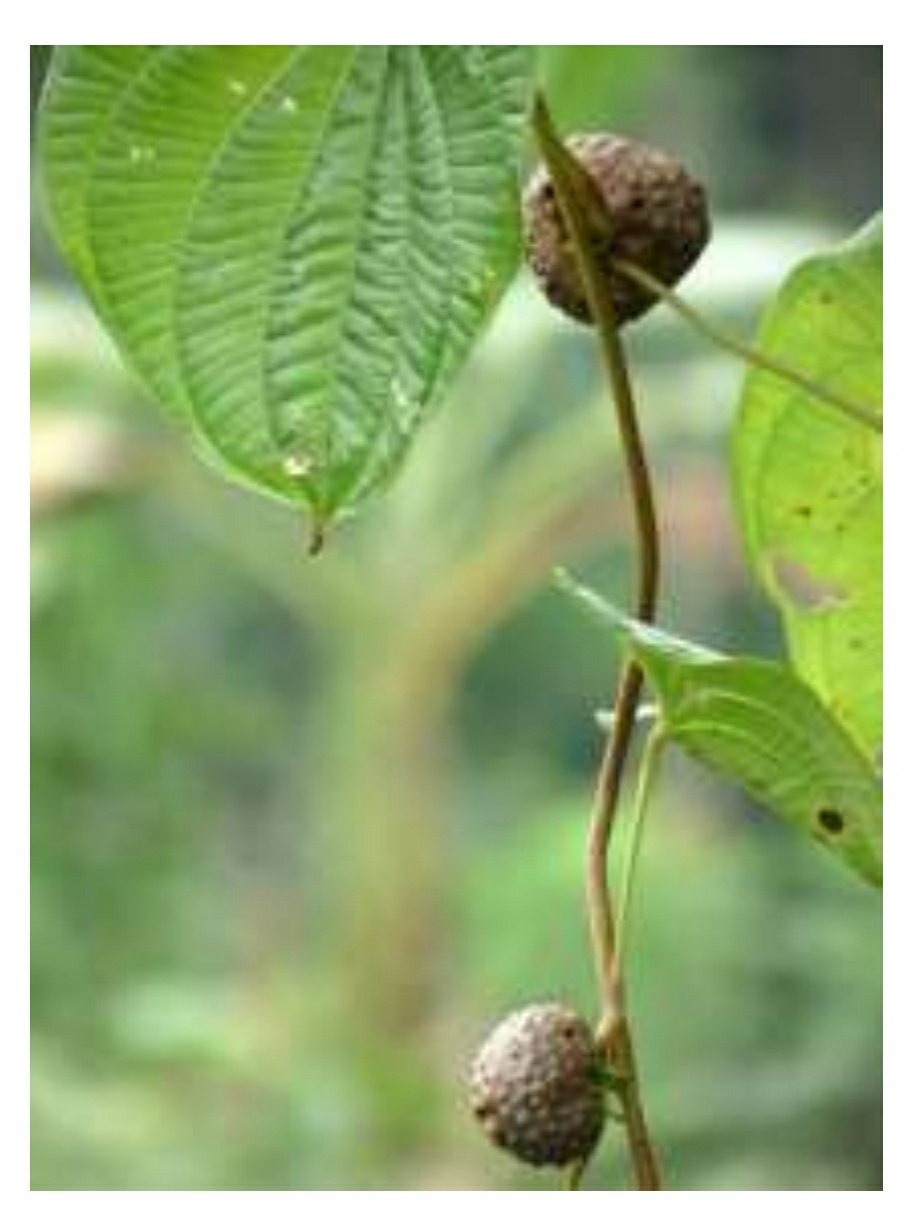Exercise: 1
Morphology of Flowering Plants

Morphological features of angiospermic plants
A plant is a passive living organism without nervous system that either synthesizes its own food from inorganic raw materials or derives nutrition from organic material (Figure 1.1)
a. There are two major divisions in plant kingdom, cryptogams (non flowering plants) and phanerogams (flowering plants), also called spermatophytes (seed bearing plants)
b. Angiosperms are the most advanced flowering plants, where seeds are covered within fruits
Parts of a Flowering Plant
Flowering plant parts are divided into two parts:
i. Vegetative parts (Vegetative bud, leaf, root, stem)
ii. Reproductive parts (Flowering bud, flower, fruit, seeds)
These vegetative and reproductive parts are distributed above and below the soil
The aerial part (mostly coloured, green or other) is the shoot system, which arises from plumule of embryo, whereas, the underground part is called the root system
The shoot system includes, buds, stem, branches, leaves flowers, fruits
The root system includes roots and sometimes root-buds
Bud: Small protruberance from stem, it is the primary growing point of vegetative or floral axis or both of them, often covered by scales, give rise to leaves, branches or flowering branch or flower. Arrangement of young leaves inside buds before opening is called Prefoliation/Vernation (Figure 1.2).
Function: Growth of axis, whether vegetative or floral
Buds are of follwoing types:
1. Normal, which may be:
Apical/Terminal: Buds at apex, grows upward (stem), gives rise to terminal flower (floral bud), can be found in any growing and flowering plant
Lateral/Axillary – In lateral positions, gives rise to branches or floral axis or axillary flowers, can be found in any growing and flowering plant
Accessory – More than one bud in normal position; Duranta, Solanum melongena, Aristolochia
2. Adventitous – Buds develop from positions other than normal, root buds of Ipomoea batatas, Begonia, Kalanchoe
Swollen buds are called bulbils; Dioscorea bulbifera(Figure 1.3)
Stem: A supportive and conducting organ developed initially from plumule and grows upward
It is positively phototropic, negatively geotropic and hydrotropic

Branch: A part of a tree which grows out from the main stem or main axis or trunk or from a bough of a plant
Node: Part of stem where leaf is attached or joined to stem
Internode: Length between two nodes
Axil: The upper angle between aleaf stalk/ branch and the stem/trunk from where it is growing
Leaf: Photosynthetic and transpiring organ, developed from leaf primordium on stem
Root: An absorbing and anchoring organ, developed from radicle, grows downward
Flower: Reproductive structure of flowering plants
Fruit: Mature ovary of flowering plants
Seed: Mature ovule of seed plants
Questions
1. Define:
i. Plant ii. Bud iii. Axil iv. Branch
v. Node vi. Bulbil
2. Enlist different parts of a flowering plant
3. Differentiate apical bud and axillary bud
